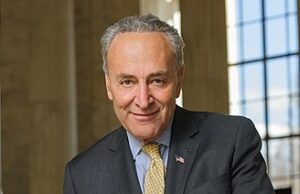HUD AWARDS $1.5 BILLION TO MORE THAN 7,100 LOCAL HOMELESS PROGRAMS
Funding supports Obama Administration strategy to prevent and end homelessness
WASHINGTON – U.S. Housing and Urban Development (HUD) Secretary Shaun Donovan today awarded $1.47 billion to renew funding to more than 7,100 local homeless programs operating across the country. The funding announced today will ensure these housing and service programs remain operating in 2012 and are a critical part of the Obama Administration’s strategic plan to prevent and end homelessness. View a complete list of all the state and local homeless assistance programs awarded funding.
The funding announced today is $62 million more than last year, the most homeless assistance ever awarded by the Department. HUD is renewing funding through its Continuum of Care programs to existing local programs as quickly as possible to prevent any interruption in federal assistance and will award funds to new projects in early 2012.
“The grants we’re awarding today will literally keep the doors of our shelters open and will help those on the front lines of ending homelessness do what they do best,” said Donovan. “It’s incredible that as we work to recover from the greatest economic decline since the Great Depression, the total number of homeless Americans is declining, in large part because of these funds.”
Last week, HUD announced its 2011 “point in time” estimate of the number of homeless persons in America. Approximately 3,000 cities and counties reported 636,000 homeless persons on a single night in January of 2011, a 2.1 percent decline from the year before. This documented reduction in homelessness was noticed among all population groups including individuals, families, and those experiencing long-term or chronic homeless. In addition, HUD’s estimate reveals a 12 percent reduction in homelessness among veterans.
HUD’s Continuum of Care grants announced today provide permanent and transitional housing to homeless persons as well as services including job training, health care, mental health counseling, substance abuse treatment and child care. Continuum of Care grants are awarded competitively to local programs to meet the needs of their homeless clients. These grants fund a wide variety of programs from street outreach and assessment programs to transitional and permanent housing for homeless persons and families.
Last year, President Obama and 19 federal agencies and offices that form the U.S. Interagency Council on Homelessness (USICH) launched the nation’s first comprehensive strategy to prevent and end homelessness. Opening Doors: Federal Strategic Plan to Prevent and End Homelessness puts the country on a path to end veterans and chronic homelessness by 2015 and to ending homelessness among children, family, and youth by 2020.
In addition to HUD’s annual grant awards, HUD continues to manage the $1.5 billion Homelessness Prevention and Rapid Re-housing (HPRP) Program. Made possible through the American Recovery and Reinvestment Act of 2009, this three-year grant program is intended to prevent persons from falling into homelessness or to rapidly re-house them if they do. To date, more than one million persons have been assisted through HPRP.
###
HUD’s mission is to create strong, sustainable, inclusive communities and quality affordable homes for all.
HUD is working to strengthen the housing market to bolster the economy and protect consumers; meet the
need for quality affordable rental homes: utilize housing as a platform for improving quality of life; build
inclusive and sustainable communities free from discrimination; and transform the way HUD does business.
More information about HUD and its programs is available on the Internet at www.hud.gov and
http://espanol.hud.gov. You can also follow HUD on twitter @HUDnews, on facebook at
www.facebook.com/HUD, or sign up for news alerts on HUD’s News Listserv.
|
STATE |
# OF PROJECTS |
TOTAL $ |
| Alaska |
25 |
$3,503,437 |
| Alabama |
65 |
$15,077,980 |
| Arkansas |
28 |
$4,445,771 |
| Arizona |
106 |
$33,097,178 |
| California |
827 |
$236,267,351 |
| Colorado |
87 |
$18,908,442 |
| Connecticut |
145 |
$30,955,085 |
| District of Columbia |
67 |
$19,584,006 |
| Delaware |
23 |
$5,167,848 |
| Florida |
331 |
$71,982,208 |
| Georgia |
139 |
$26,412,366 |
| Guam |
6 |
$879,384 |
| Hawaii |
37 |
$10,698,683 |
| Iowa |
46 |
$7,713,769 |
| Idaho |
38 |
$3,487,320 |
| Illinois |
400 |
$83,164,397 |
| Indiana |
111 |
$14,143,635 |
| Kansas |
51 |
$7,040,259 |
| Kentucky |
99 |
$17,076,748 |
| Louisiana |
153 |
$26,303,186 |
| Massachusetts |
329 |
$60,287,802 |
| Maryland |
220 |
$45,393,648 |
| Maine |
43 |
$9,273,528 |
| Michigan |
294 |
$58,882,624 |
| Minnesota |
163 |
$21,457,685 |
| Missouri |
113 |
$24,269,722 |
| Mississippi |
27 |
$4,298,821 |
| Montana |
18 |
$2,436,441 |
| North Carolina |
133 |
$16,661,747 |
| North Dakota |
21 |
$1,856,410 |
| Nebraska |
27 |
$4,170,820 |
| New Hampshire |
54 |
$5,734,811 |
| New Jersey |
197 |
$25,037,712 |
| New Mexico |
44 |
$7,042,298 |
| Nevada |
31 |
$7,038,188 |
| New York |
682 |
$172,228,303 |
| Ohio |
286 |
$70,305,175 |
| Oklahoma |
51 |
$6,049,117 |
| Oregon |
112 |
$19,210,480 |
| Pennsylvania |
439 |
$72,702,321 |
| Puerto Rico |
50 |
$13,473,676 |
| Rhode Island |
44 |
$4,648,987 |
| South Carolina |
49 |
$7,387,804 |
| South Dakota |
8 |
$1,190,215 |
| Tennessee |
133 |
$17,316,659 |
| Texas |
240 |
$64,731,964 |
| Utah |
50 |
$5,260,696 |
| Virginia |
141 |
$20,968,600 |
| Virgin Islands |
1 |
$168,352 |
| Vermont |
22 |
$3,569,374 |
| Washington |
208 |
$38,610,507 |
| Wisconsin |
94 |
$21,348,710 |
| West Virginia |
41 |
$4,429,412 |
| Wyoming |
4 |
$338,517 |
|
TOTAL |
7153 |
$1,473,690,179 |
Contact:
Brian Sullivan
(202) 708-0685















